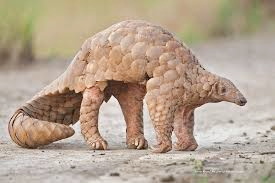Indian Pangolin | 05 Jan 2021
Why in News
Recently, the Odisha Forest department has stressed the need for stricter monitoring of social media platforms to check pangolin poaching and trading.
Key Points
- About:
- Pangolins are scaly anteater mammals and they have large, protective keratin scales covering their skin. They are the only known mammals with this feature.
- Diet:
- Insectivore- Pangolins are nocturnal, and their diet consists of mainly ants and termites, which they capture using their long tongues.
- Types:
- Out of the eight species of pangolin, the Indian Pangolin (Manis crassicaudata) and the Chinese Pangolin (Manis pentadactyla) are found in India.
- Difference:
- Indian Pangolin is a large anteater covered by 11-13 rows of scales on the back.
- A terminal scale is also present on the lower side of the tail of the Indian Pangolin, which is absent in the Chinese Pangolin.
- Habitat:
- Indian Pangolin:
- It is widely distributed in India, except the arid region, high Himalayas and the North-East.
- The species is also found in Bangladesh, Pakistan, Nepal and Sri Lanka.
- Chinese Pangolin:
- It is found in the Himalayan foothills in Eastern Nepal, Bhutan, Northern India, North-East Bangladesh and through Southern China.
- Indian Pangolin:
- Threats to Pangolins in India:
- Hunting and poaching for local consumptive use (e.g. as a protein source and traditional medicine) and international trade for its meat and scales in East and South East Asian countries, particularly China and Vietnam.
- They are believed to be the world’s most trafficked mammal.
- Conservation Status:
- Wildlife Protection Act, 1972: Schedule I
- IUCN Red List: Endangered
- CITES: Appendix I
